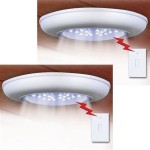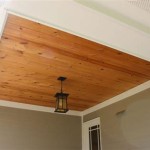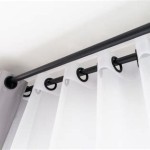The Benefits Of Tongue And Groove Pine Ceilings In Houses
Tongue and groove pine ceilings represent a popular choice for homeowners seeking to enhance the aesthetic appeal and value of their residences. This construction method, characterized by precisely milled boards that interlock seamlessly, offers a unique blend of visual charm, durability, and practical advantages. The use of pine, a readily available and relatively affordable softwood, further contributes to its widespread adoption in both new construction and renovation projects.
The following explores the multifaceted benefits of incorporating tongue and groove pine ceilings into a home's design. The discussion delves into the aesthetic qualities, structural advantages, cost-effectiveness, and insulative properties that make this option a compelling consideration for homeowners and builders alike. Careful examination of these factors is crucial in determining whether tongue and groove pine ceilings align with specific architectural styles, budgetary constraints, and functional requirements.
Aesthetic Appeal and Design Versatility
One of the primary drivers behind the popularity of tongue and groove pine ceilings is their inherent aesthetic appeal. The natural grain patterns and warm tones of pine wood introduce a sense of rustic charm and inviting elegance to any room. Unlike flat, sterile ceiling surfaces, tongue and groove pine adds texture and visual interest, creating a focal point that can significantly enhance the overall ambiance of the living space.
The design versatility of tongue and groove pine allows it to seamlessly integrate into a wide range of architectural styles. From traditional farmhouse and country cottages to modern and contemporary homes, the adaptable nature of pine makes it a suitable choice for various design schemes. The boards can be installed horizontally, vertically, or diagonally, offering further customization options to achieve the desired look. Furthermore, the wood can be stained, painted, or left in its natural state to complement the existing décor and personal preferences.
The ability to customize the finish of tongue and groove pine ceilings offers homeowners unparalleled control over the final appearance. Staining the wood can accentuate the natural grain patterns and bring out the rich, warm tones, while painting it allows for a more modern and minimalist aesthetic. A clear sealant can also be applied to protect the wood from moisture and UV damage while preserving its natural beauty. The choice of finish ultimately depends on the desired style and the overall design concept of the room.
Beyond the wood itself, the installation pattern can dramatically influence the visual impact of the ceiling. Horizontal installation tends to create a sense of spaciousness and width, making it ideal for smaller rooms. Vertical installation, on the other hand, can add height and create a more dramatic effect. Diagonal installation offers a unique and visually striking alternative, adding a touch of contemporary flair to the space. The choice of installation pattern should be carefully considered to achieve the desired aesthetic outcome.
The use of contrasting trims and moldings can further enhance the visual appeal of tongue and groove pine ceilings. Crown molding, for example, can add a touch of elegance and sophistication, while simple baseboards can provide a clean and finished look. The choice of trim should complement the overall style of the room and the finish of the pine wood. Carefully selected lighting fixtures can also play a crucial role in highlighting the texture and warmth of the ceiling, creating a comfortable and inviting atmosphere.
Enhanced Structural Integrity And Durability
In addition to its aesthetic qualities, tongue and groove pine ceilings offer significant structural benefits. The interlocking design of the boards creates a strong and stable surface that can contribute to the overall rigidity of the building. This is particularly important in older homes where the existing ceiling structure may be weak or uneven. Installing tongue and groove pine can provide additional support and reinforce the ceiling, prolonging its lifespan and preventing costly repairs.
The use of kiln-dried pine ensures that the wood is properly seasoned and less prone to warping or shrinking over time. This is essential for maintaining the structural integrity of the ceiling and preventing gaps from forming between the boards. Kiln-drying also helps to eliminate moisture content, which can reduce the risk of mold and mildew growth. Properly treated pine is resistant to insect damage and decay, ensuring that the ceiling will remain in good condition for many years to come.
The durability of tongue and groove pine ceilings makes them a practical choice for high-traffic areas such as living rooms, kitchens, and entryways. Unlike drywall, which is susceptible to dents and scratches, pine wood is relatively resistant to damage from everyday wear and tear. This makes it a suitable option for homes with children or pets. In the event that the ceiling does sustain damage, it can often be repaired relatively easily by replacing individual boards.
The interlocking design of tongue and groove also provides added strength against upward forces. In areas prone to high winds or seismic activity, this can be a significant advantage. The secure connection between the boards helps to prevent the ceiling from lifting or collapsing, protecting the occupants of the home. When properly installed, tongue and groove pine ceilings can contribute to the overall safety and stability of the building.
Furthermore, the natural resilience of pine wood makes it a sustainable choice for construction. Pine is a renewable resource that can be harvested responsibly without depleting forests. The use of locally sourced pine can further reduce the environmental impact of the project. When compared to other building materials such as concrete or steel, pine wood has a lower carbon footprint and is a more environmentally friendly option.
Improved Insulation And Acoustic Properties
Tongue and groove pine ceilings offer inherent insulation properties that can help to regulate the temperature inside the home. Wood is a natural insulator, and pine in particular has a relatively high R-value compared to other common building materials. This means that it can effectively reduce heat transfer, keeping the home cooler in the summer and warmer in the winter. This can lead to significant energy savings and reduced heating and cooling costs.
The tight fit between the tongue and groove boards also helps to minimize air leaks, further improving the insulation performance of the ceiling. This is particularly important in older homes where air gaps may be present in the existing ceiling structure. By sealing these gaps, tongue and groove pine can help to reduce drafts and create a more comfortable living environment. This can also improve the efficiency of the home's heating and cooling systems, leading to further energy savings.
In addition to insulation, tongue and groove pine ceilings also offer acoustic benefits. The wood surface helps to absorb sound waves, reducing echo and reverberation within the room. This can create a more pleasant and peaceful living environment, particularly in homes with high ceilings or open floor plans. The acoustic properties of pine can also be beneficial in home theaters or music rooms, where sound quality is a critical consideration.
The use of additional insulation materials in conjunction with tongue and groove pine can further enhance its thermal and acoustic performance. Fiberglass batts or spray foam insulation can be installed above the ceiling to provide an additional layer of protection against heat transfer and noise. This is particularly effective in attics or upper-level rooms where insulation is crucial for maintaining a comfortable temperature. The combination of tongue and groove pine with proper insulation can create a highly energy-efficient and soundproof ceiling system.
The natural porosity of pine wood also contributes to its ability to regulate humidity levels within the home. Pine can absorb excess moisture from the air, preventing condensation and reducing the risk of mold and mildew growth. This is particularly beneficial in bathrooms or kitchens where humidity levels tend to be higher. The moisture-regulating properties of pine can help to create a healthier and more comfortable living environment.
The benefits of tongue and groove pine ceilings extend beyond aesthetics, encompassing structural advantages, cost-effectiveness, and insulative properties. Carefully weighing these considerations is essential for homeowners and builders seeking to make informed decisions about their ceiling options.

Curious About Pickled Pine Tongue And Groove Walls Ceilings Country Home Blooms

5 Benefits Of Using Wood Paneling For Ceilings And Decking Loghomepe Com The Log Home Pe

5 Reasons To Panel Your Den With Pine Tongue Groove Woodworkers

Build A Tongue And Groove Porch Ceiling Cardinal Home Center Central Virginia Building Supply

Benefits Of Paneling With Tongue N Groove End Matching Features

Tongue And Groove Ceiling Planks Ceilings Armstrong Residential

Shrinkage In A Tongue And Groove Pine Ceiling

Knotty Pine Paneling Is A Versatile

Tongue And Groove Ceiling Planks Ceilings Armstrong Residential

Knotty Pine Paneling Best S Tongue And Groove The Log Home Pe
Related Posts








